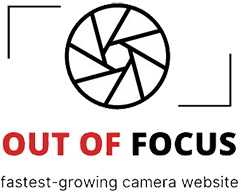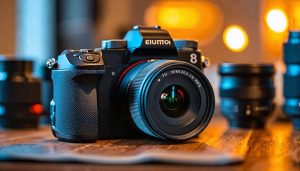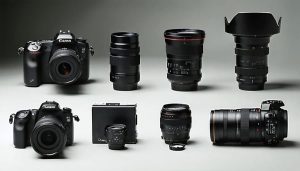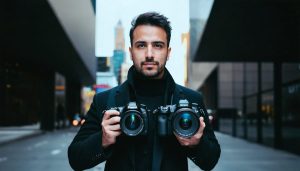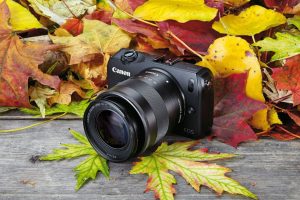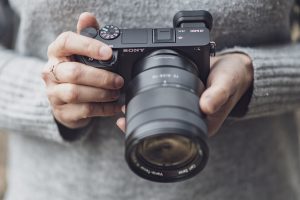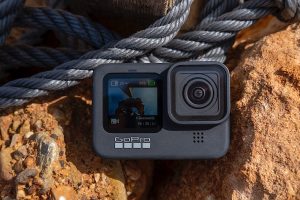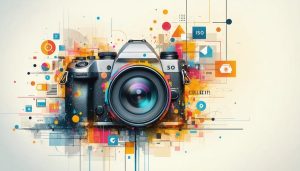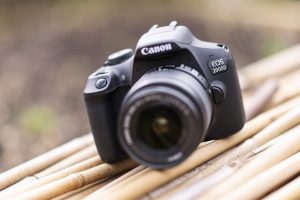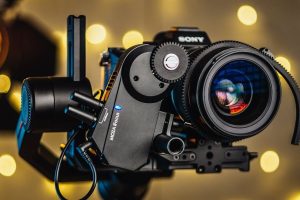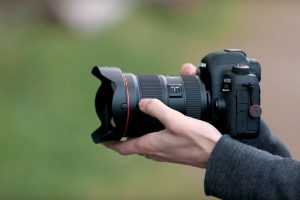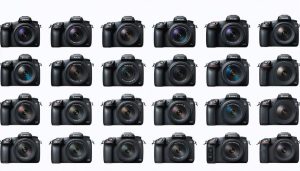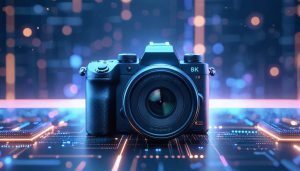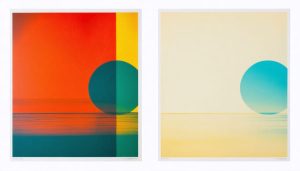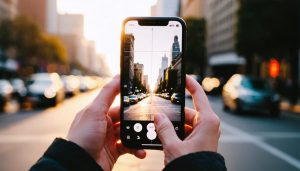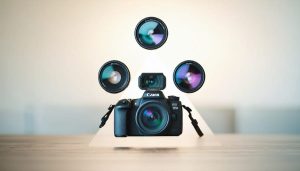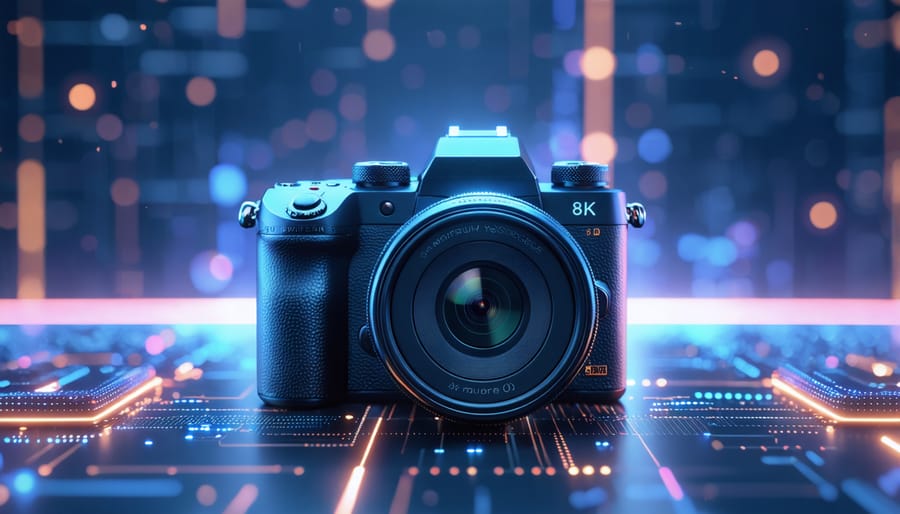
Step into the future of cinematography with 8K mirrorless cameras, where groundbreaking mirrorless camera technology meets unprecedented resolution. These cutting-edge imaging tools capture a staggering 33.2 megapixels per frame, offering four times the detail of 4K footage and opening new horizons for professional filmmaking, high-end commercial photography, and advanced post-production flexibility.
Beyond the headline-grabbing resolution numbers, 8K mirrorless cameras represent a paradigm shift in creative possibilities. Their compact form factor belies their extraordinary capabilities: pristine image quality, superior low-light performance, and the ability to extract crystal-clear still frames from video sequences. For cinematographers and photographers pushing the boundaries of their craft, 8K acquisition future-proofs content while providing unprecedented creative control in post-production.
However, this technological marvel comes with practical considerations. Storage requirements, processing power demands, and workflow adjustments must be carefully weighed against the transformative benefits of 8K capture. Understanding these factors is crucial for professionals considering the leap into ultra-high-resolution imaging, where every pixel contributes to telling more compelling visual stories.
Understanding 8K Resolution in Photography
What Exactly is 8K Resolution?
8K resolution represents a massive leap in image quality, packing approximately 33.2 megapixels into each frame – that’s roughly four times the resolution of 4K and sixteen times that of standard HD (1080p). In numerical terms, 8K delivers 7680 x 4320 pixels, creating incredibly detailed images that maintain their sharpness even when viewed on large displays or heavily cropped.
To put this in perspective, imagine taking a photograph of a cityscape. With 4K, you’d get excellent detail of the buildings and streets. But with 8K, you could zoom in to see individual windows, architectural details, and even small signs with remarkable clarity. This level of detail opens up new creative possibilities, especially for photographers who need maximum flexibility in post-processing.
The jump from 4K to 8K is similar to the transition we experienced from HD to 4K, but with even more dramatic results. While 4K resolution (3840 x 2160 pixels) already offers exceptional clarity, 8K pushes the boundaries of what’s possible in digital imaging. This increased resolution isn’t just about bigger numbers – it’s about capturing more information in every shot, allowing for more extensive editing options and future-proofing your content.
However, it’s worth noting that working with 8K requires significant storage capacity and processing power, as these ultra-high-resolution files are substantially larger than their 4K counterparts.
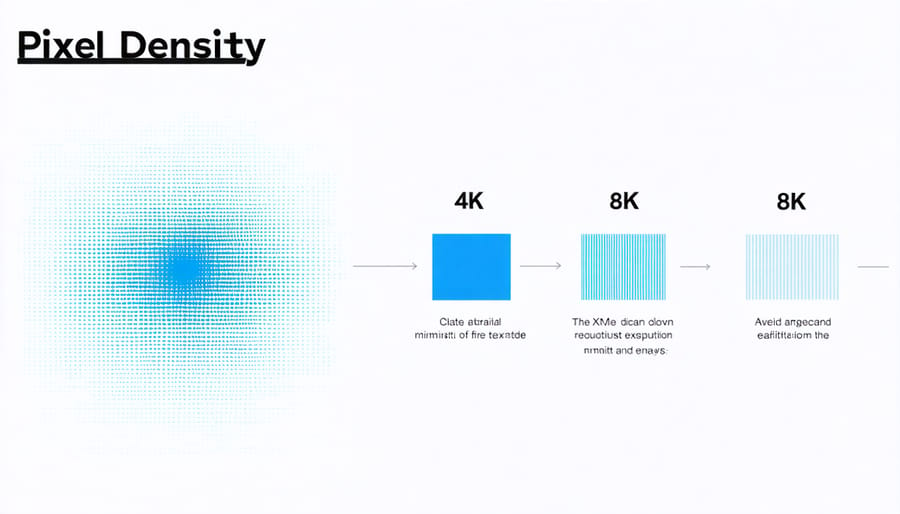
Real-World Benefits of 8K Photography
The staggering resolution of 8K photography opens up a world of possibilities that extend far beyond basic image capture. For commercial photographers, the ability to crop extensively while maintaining exceptional detail means one shot can yield multiple usable compositions – a game-changer for product photography and editorial work. Landscape photographers can capture unprecedented levels of detail, from individual leaves in a sweeping forest vista to the subtle textures of distant mountain ranges.
Perhaps the most practical benefit comes in large-format printing. 8K resolution allows for wall-sized prints that maintain crystal clarity even at close viewing distances. Art galleries and commercial spaces can showcase photographs at previously impossible scales without losing sharpness or impact. Architecture photographers particularly benefit from this capability, as their work often requires both wide perspectives and minute structural details to be perfectly preserved.
The extensive resolution also provides a form of future-proofing. As display technologies continue to advance, these ultra-high-resolution images will remain relevant and usable. For archival purposes, cultural institutions and documentary photographers can capture historical artifacts and moments with an unprecedented level of detail, ensuring that future generations have access to the richest possible visual records.
Additionally, the high resolution provides greater flexibility in post-processing. Whether it’s precise retouching for fashion photography or detailed compositing work for commercial projects, having such a high-resolution base image gives photographers more creative control and technical latitude in their editing process.
Current 8K Mirrorless Camera Options
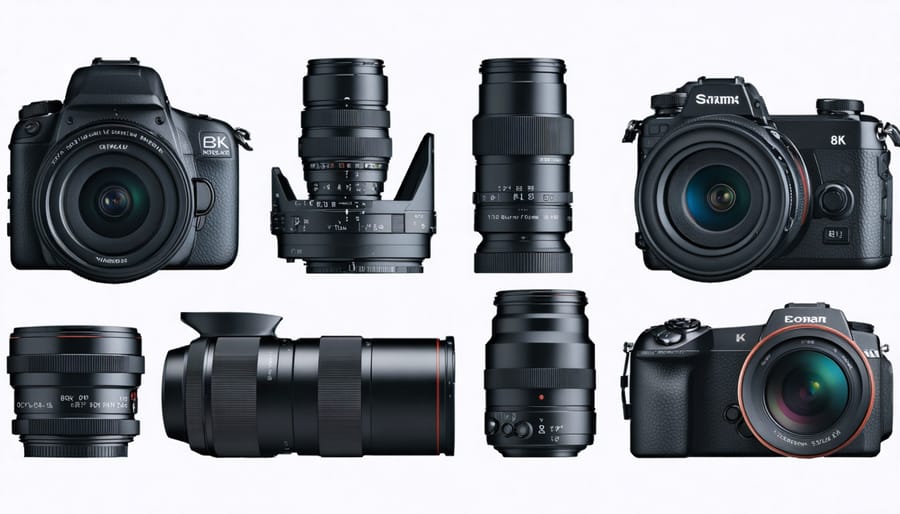
Leading Models in the Market
The landscape of 8K mirrorless cameras has evolved significantly, with several manufacturers pushing the boundaries of what’s possible. Among the popular mirrorless models, a few standouts have made their mark in the 8K arena.
The Canon EOS R5 leads the pack as one of the first mainstream mirrorless cameras to offer 8K video recording. It captures stunning 8K RAW footage at 30fps, though users should note its recording time limitations due to heat management. The camera’s dual-pixel autofocus system and 45-megapixel sensor make it a versatile tool for both stills and video work.
Sony’s A1 represents another milestone in 8K capability, offering 8K recording at 30fps with impressive heat management. Its 50-megapixel sensor and advanced autofocus system make it a powerhouse for professional work, though it comes with a premium price tag.
Nikon’s Z9 brings remarkable endurance to 8K recording, capable of capturing sustained 8K footage without overheating concerns. Its stacked CMOS sensor and advanced cooling system set new standards for professional videography.
The Sharp 8K Video Camera stands out as a specialized tool, designed specifically for 8K video production. While it may lack some traditional photography features, its dedicated video capabilities make it a unique option for cinematographers.
Each of these models offers distinct advantages, from Canon’s all-around versatility to Sony’s technical prowess, Nikon’s endurance, and Sharp’s specialized focus. Your choice should align with your specific needs, budget, and intended use case.
Price-to-Feature Analysis
When comparing 8K mirrorless cameras, the price-to-feature ratio varies significantly across different models. The Sony A1, priced around $6,500, offers comprehensive 8K capabilities alongside professional-grade autofocus and high-speed shooting, making it a strong value proposition for professional photographers and videographers who need cutting-edge technology. In contrast, the Canon EOS R5, at approximately $3,900, presents a more accessible entry point into 8K photography while maintaining excellent image quality and versatile features.
For those considering the investment, it’s important to evaluate how different models balance their feature sets. The Nikon Z9, positioned at around $5,500, combines robust 8K video capabilities with exceptional durability and advanced AI-powered focusing, offering excellent value for sports and wildlife photographers. Meanwhile, the Fujifilm GFX 100S, though pricier at about $6,000, provides medium format quality alongside 8K capabilities, appealing to studio and landscape photographers who prioritize image resolution.
When assessing value, consider factors beyond just the 8K feature. Storage costs, necessary accessories, and cooling solutions can add significantly to the total investment. Some cameras offer better heat management or more efficient compression, potentially saving money on additional cooling equipment or storage solutions.
The sweet spot for most users typically lies in cameras that balance 8K capabilities with practical features like reliable autofocus, good battery life, and effective image stabilization. While premium models command higher prices, they often justify the cost through superior build quality, better weather sealing, and more sophisticated processing engines that enhance the overall shooting experience.
Technical Considerations and Challenges
Storage and Processing Requirements
Working with 8K footage demands serious consideration of your storage and processing capabilities. A single minute of RAW 8K video can consume anywhere from 5 to 8 gigabytes of storage space, meaning a typical one-hour shoot could easily fill a 500GB memory card. For photographers shooting both stills and video, it’s recommended to invest in multiple high-capacity CFexpress Type B cards, with at least 256GB each.
Post-production workflow presents another significant challenge. Editing 8K footage requires a powerful computer system with a recent multi-core processor, substantial RAM (32GB minimum, 64GB recommended), and a dedicated graphics card with at least 8GB of VRAM. Even then, many editors find themselves working with proxy files – lower-resolution versions of the original footage – to maintain smooth playback during editing.
For long-term storage, consider a RAID setup or multiple external hard drives. A weekend’s worth of 8K shooting could easily generate 2-3 terabytes of data. Cloud storage, while convenient for backup, may not be practical for primary storage due to lengthy upload times and bandwidth limitations.
To put this in perspective, if you’re shooting regular 8K content, plan to budget not just for the camera itself, but also for a robust storage solution and potentially a computer upgrade to handle the workflow efficiently.
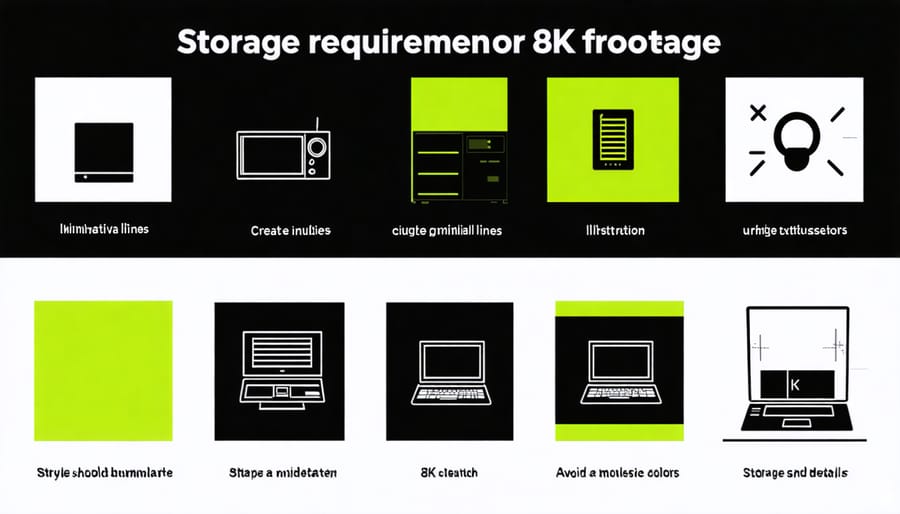
Battery Life and Heat Management
Shooting 8K video puts significant demands on both your camera’s battery and thermal management systems. In real-world usage, you can expect battery life to be roughly 30-40% shorter when recording 8K compared to 4K footage. A single fully-charged battery typically provides 45-60 minutes of continuous 8K recording, though this varies by camera model and shooting conditions.
To manage these power demands, professional photographers often carry 3-4 spare batteries for a full day of shooting. Some manufacturers offer battery grips that effectively double your shooting time while providing better ergonomics for vertical compositions.
Heat management is equally crucial. Most 8K cameras employ sophisticated cooling systems, but they can still reach their thermal limits during extended recording sessions. You’ll typically get 20-30 minutes of continuous 8K recording before the camera needs a cooling break. Shooting in hot weather or direct sunlight can further reduce these times.
To optimize both battery life and heat management:
– Pre-cool your camera in air-conditioned environments before outdoor shoots
– Use external power solutions for lengthy sessions
– Schedule short breaks between recording segments
– Keep spare batteries in a cool place
– Consider using an external fan for critical shoots
– Monitor your camera’s temperature indicators
These considerations are especially important for event photographers and videographers who can’t afford unexpected shutdowns during crucial moments.
Lens Considerations
When shooting in 8K resolution, your choice of glass becomes more critical than ever. The increased resolution demands exceptional optical quality to fully realize the potential of your camera’s sensor. Not all lenses are created equal when it comes to meeting these stringent lens requirements.
For optimal 8K performance, look for lenses specifically designed for high-resolution sensors. These typically feature advanced optical elements, superior coating technologies, and precise engineering to minimize aberrations and maximize sharpness across the entire frame. Modern mirrorless-specific lenses often perform better than adapted DSLR glass, as they’re designed with these high-resolution sensors in mind.
Consider investing in prime lenses for critical work, as they generally offer superior optical performance compared to zoom lenses. When selecting zoom lenses, premium options from manufacturers like Canon RF, Sony G Master, or Nikon Z series are worth the investment for their enhanced resolution capabilities.
Remember that older lenses might not resolve enough detail for 8K capture, even if they performed well with lower-resolution sensors. Pay particular attention to edge sharpness and chromatic aberration control, as these characteristics become more noticeable at higher resolutions. Many photographers find that upgrading their lens collection is just as important as investing in an 8K camera body.
Who Really Needs 8K?
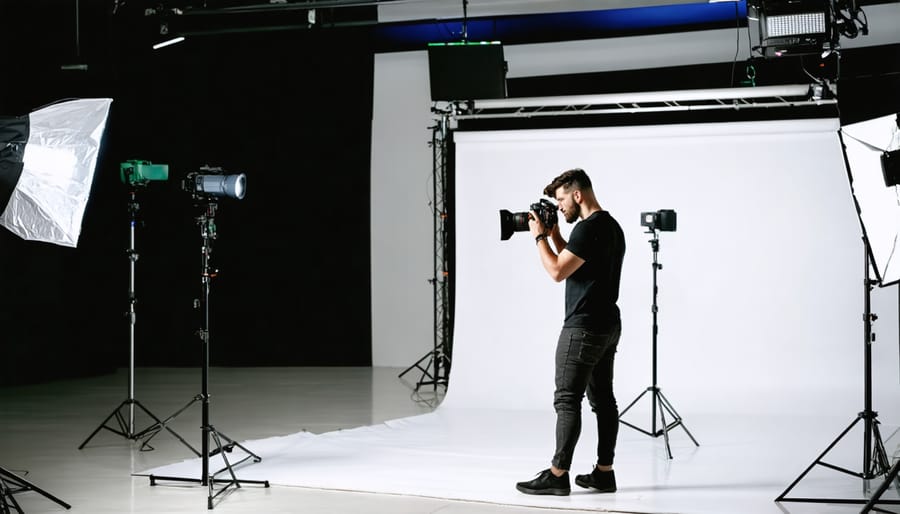
Professional Use Cases
While 8K resolution might seem excessive for casual photography, there are several professional scenarios where this cutting-edge technology proves invaluable. Film and television production studios increasingly rely on 8K cameras to future-proof their content and provide more flexibility in post-production. The ability to crop and reframe shots while maintaining 4K quality gives directors and editors unprecedented creative control.
Commercial photographers working with high-end brands particularly benefit from 8K capabilities. When shooting products for billboard advertisements or large-format displays, the exceptional detail capture ensures imagery remains crisp even at massive scales. Fashion photographers can capture minute fabric textures and intricate designs that might be lost at lower resolutions.
Wildlife and nature photographers find 8K especially useful when documenting rare moments. The ultra-high resolution allows them to crop significantly while maintaining professional-quality output, effectively turning a single shot into multiple usable images. This versatility is crucial when working with unpredictable subjects at a distance.
For architectural and real estate photography, 8K delivers stunning virtual tours and marketing materials. The enhanced detail allows potential buyers to examine properties thoroughly, from overall room layouts to the finest architectural details. When combined with other professional photography equipment, 8K cameras enable virtual experiences that rival in-person viewings.
Stock photographers also benefit from 8K’s versatility, as these high-resolution images can be licensed for various uses, from web content to large-format printing, making their work more valuable and versatile in the marketplace. The future-proof nature of 8K content ensures these assets remain relevant as display technology continues to evolve.
Alternative Options
While 8K mirrorless cameras represent cutting-edge technology, they might not be the best choice for everyone. For photographers seeking cost-effective alternatives, several compelling options exist that might better suit your needs and budget.
The Sony A7 IV and Canon R6 Mark II, both offering exceptional 4K capabilities, deliver outstanding image quality for both photography and video at more accessible price points. These cameras excel in low-light performance and autofocus capabilities, making them versatile tools for various shooting scenarios.
For those primarily focused on still photography, the Fujifilm X-T4 presents an excellent balance of features and value. Its 26.1MP sensor produces stunning images, and while it offers 4K video, it emphasizes photography-centric features that many users will appreciate more than 8K recording.
Content creators who primarily share their work online should consider that most viewing platforms and devices don’t yet support 8K resolution. A camera like the Panasonic GH6, with its robust 4K features and specialized video tools, might be more practical for your workflow.
Remember that investing in quality lenses often yields more noticeable improvements in image quality than upgrading to 8K capability. Consider allocating your budget toward building a versatile lens collection with a 4K-capable body instead of stretching for 8K if you’re not specifically requiring that resolution for your work.
As we’ve explored throughout this comprehensive guide, 8K mirrorless cameras represent the cutting edge of imaging technology, offering unprecedented resolution and creative possibilities for content creators and photographers. While these cameras come with a premium price tag and specific workflow considerations, they provide unmatched flexibility in post-production and future-proof your content for years to come.
For professional videographers, commercial photographers, and high-end content creators, the investment in an 8K mirrorless camera can be justified by the superior image quality, enhanced cropping options, and ability to future-proof your work. The ability to capture stunning 33-megapixel still frames from video footage adds another compelling dimension to these versatile tools.
However, it’s important to be realistic about your needs. If you’re primarily shooting for social media or standard web content, a 4K camera might better serve your purposes while saving you considerable expense. Consider factors like storage requirements, processing power needed for editing, and your typical delivery format before making the investment.
For those ready to embrace 8K, we recommend starting with a robust storage solution and powerful editing setup to handle the demanding workflow. Familiarize yourself with proxy editing workflows and invest in fast memory cards to maximize your camera’s capabilities.
Whether you choose to invest in 8K technology now or wait for prices to decrease further, understanding these capabilities helps you make an informed decision based on your specific needs and creative goals. As the technology continues to evolve and become more accessible, 8K cameras will increasingly become the standard for professional imaging devices.
